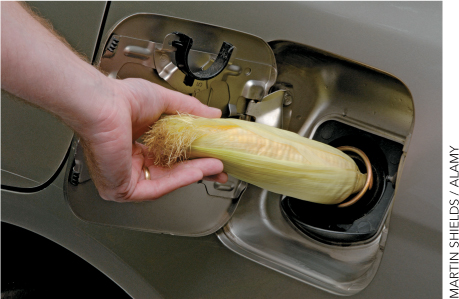Markets Link to One Another
In Chapter 3 and Chapter 4, we showed how the supply and demand for oil determine the price of oil. Now we return to oil but this time as an example of how shifts in supply and demand in one market ripple across the worldwide market, changing distant people and products in ways that no one can foresee.

The Kenyan flower industry was one unforeseen consequence of changes in the market for oil. Prior to the 1970s, roses were grown in American greenhouses. Higher prices for oil raised heating costs so much that it became cheaper to grow roses in warm countries and ship them to cold countries.* If roses had been heavier, the higher costs of transportation might have outweighed the lower costs of heating, but even with higher fuel costs, transportation costs in the modern world have been falling.
It’s not obvious that the right way to respond to an increased scarcity of oil is to move flower production from California to Kenya. No one planned such a response in advance. Instead, creative entrepreneurs responded to the increase in the price of oil in ways that no one predicted or planned. Entrepreneurs are constantly on the lookout for ways to lower costs, and their cost-cutting measures link markets that at first seem like they are a world away.
From Oil to Candy Bars and Brick Driveways
How does the price of oil affect the price of candy bars? One way is obvious: Higher energy costs increase the cost of producing most products, including candy bars. But the market also links oil and candy bars in more subtle ways. For instance, ethanol is the active ingredient in alcoholic beverages, but it’s also a good fuel that can be made from a variety of crops like corn or sugar cane. Brazil is the largest producer and consumer of fuel ethanol in the world, so much so that it has managed to reduce its gasoline consumption by 40% by adopting flexible fuel vehicles that can run on ethanol, gasoline, or any combination of the two.4 Brazil is also the largest producer of sugar in the world.
CHECK YOURSELF
Question 7.1
 The U.S. government offers a subsidy for converting corn to ethanol. If farmers receive a higher price for turning corn into ethanol, what will happen to the price of corn used in cornbread? How will cafeterias and restaurants respond?
The U.S. government offers a subsidy for converting corn to ethanol. If farmers receive a higher price for turning corn into ethanol, what will happen to the price of corn used in cornbread? How will cafeterias and restaurants respond?
Question 7.2
 Sawdust is used for bedding milk cows. What did the end of the housing boom in 2007 do to the price of milk? Search for “sawdust” at http://www.MarginalRevolution.com if you need a hint.
Sawdust is used for bedding milk cows. What did the end of the housing boom in 2007 do to the price of milk? Search for “sawdust” at http://www.MarginalRevolution.com if you need a hint.
Can you see the connection between the price of oil and the price of candy bars now? As the price of oil has increased, the Brazilians have shifted sugar cane from sugar production to ethanol production, thereby holding down fuel costs but increasing the price of sugar.5

What about brick driveways? A 42-gallon barrel of crude oil is refined into approximately 19.5 gallons of gasoline, 9.7 gallons of fuel oil, 4 gallons of jet fuel, 1.4 gallons of asphalt, and a number of other products.6 To some extent, these divisions are fixed. (Asphalt is what you get after you separate out the other products.) But oil refiners do have some flexibility, and when the price of gasoline is relatively high, it pays for them to pull every last drop of gasoline out of a barrel of crude, leaving less crude to make the remaining products. A higher price of gasoline, therefore, means a reduced supply of asphalt. A reduced supply of asphalt pushes up the price of asphalt. When the price of oil rose to $70 a barrel in 2006, for example, the price of using asphalt to pave an average-sized driveway rose by $300.7 Seeing the higher price, homeowners turned to substitutes such as concrete, cobblestones, and brick.